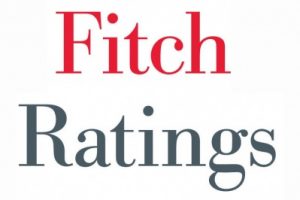
Fitch Ratings has affirmed Ukraine’s Long-Term Foreign-Currency (LTFC) Issuer Default Rating (IDR) at ‘B’ with a stable outlook, the rating agency said on its website.
“The ratings of Ukraine reflect its credible macroeconomic policy framework that had lowered inflation and narrowed fiscal deficits prior to the coronavirus shock, and a record of multilateral support. These strengths are set against low external liquidity relative to high financing needs associated with large sovereign debt repayments, a vulnerable, albeit improving, banking sector, and weak governance indicators. The coronavirus shock has at least temporarily reversed Ukraine’s improvements made in recent years in terms of a declining debt burden, normalization of growth prospects after the 2014-2015 geopolitical and economic crises, and reduced growth volatility,” it said.
“Ukraine’s new IMF program has been designed to reduce financing constraints and support a recovery in international reserves. Ukraine received the first tranche ($2.1 billion) under a $5 billion 18-month Stand-By Arrangement (SBA) for budget support in June. The sovereign also issued a $2 billion eurobond in July. Easing of external-financing constraints allowed the sovereign to buy back external bonds maturing in 2021-2022 and to repurchase close to 10% of its outstanding GDP warrants,” the report says.
“Fitch estimates that Ukraine has met close to 68% of its 2020 fiscal financing needs of $23.5 billion ($14.2 billion in amortizations including debt prepayments). Fitch expects one additional disbursement from the IMF SBA ($700 million) and the first tranche of a new EUR1.2 billion loan in 2020. Available domestic liquidity and government cash holdings provide room to accommodate remaining financing requirements, which in turn are dependent on the pace of expenditure implementation. Domestic banks, most notably state-owned, have increased exposure to government debt, as foreign investors have reduced their share of domestic government bonds by about $1.5 billion since February to 16% (not including National Bank of Ukraine, NBU, holdings),” according to the document.
“International reserves rose to $29 billion at the beginning of September, due to central bank FX purchases (net $1.2 billion YTD in 2020) and external financing. We expect international reserves to finish 2020 at $27.4 billion or 4.5 months of current external payments (CXP), slightly above the projected 4.1 months for the ‘B’ median. In our forecast for a gradual return of the current account deficit and continued access to external financing, reserve coverage will average 3.8 months of CXP in 2021-2022. External liquidity, measured by the country’s liquid external assets-to-liquid external liabilities, will rise to 112% for 2021, close to the 118% forecast for the ‘B’ median,” it reads.
“External financing needs have declined compared with previous years (35% of international reserves) in spite of large debt repayments, reflecting higher international reserves and a projected current account surplus (2.5% of GDP) in 2020, due to fairly resilient exports and remittances, sharp decline in imports and improved data availability on reinvested earnings by foreign investors. External financing needs will rise in 2021-2022 with the return to a current account deficit (reaching 3.5% of GDP by 2022). External sovereign amortizations (government plus NBU) will decline from $6 billion in 2020 but will remain large averaging $4.3 billion in 2021-2022 (bond repayments of $2 billion and $1 billion, respectively),” Fitch experts noted.
“Fitch considers that continued engagement with the IMF is key for Ukraine to maintain access to external financing. However, the IMF SBA implementation risks are significant given Ukraine’s poor record from previous programs and potential judicial rulings and legislative initiatives that lead to reform reversals. In Fitch’s view, unexpected and frequent cabinet changes early in the year, especially those related to key economic positions such as the Minister of Finance, and political pressure on NBU, leading to the governor’s resignation in July, create policy uncertainty. In addition to eroding hard-earned policy credibility, reduced central bank independence could lead to reversal in the improvements in macroeconomic and financial-sector stability, constrain access to external financing and increase Ukraine’s vulnerability to shocks,” they added.
“Inflationary pressures remain subdued (2.4% y-o-y in July; core 3%), but inflation is expected to approach the 5% NBU target by end-2020 due to higher energy and food prices as well as recovering domestic demand. Fitch expects inflation to average 5.3% in 2021 and 5.7% in 2022, above the forecast 4.4% and 4.8% ‘B’ medians. The NBU cut policy rates to a record low 6% in June (750bp in H1, 2020) in response to the pandemic, but further easing could be constrained, in Fitch’s view, by rising inflationary pressures and the proposal of a significant minimum wage increase in 2021,” they stated.
“Fitch maintains its April forecast that the economy will contract 6.5% in 2020. The economy reportedly contracted 11.4% in Q2, 2020. Improving retail sales, industrial production and construction reflect reviving consumption and investment, while faster expenditure implementation in H2, 2020 and lower interest rates will support recovery. We expect growth to reach 3.8% and 3.5%, respectively, in 2021 and 2022, in line with our medium-term forecasts for Ukraine. However, downside risks to our forecasts remain, given uncertainty around the extent and duration of the coronavirus outbreak, and the duration or re-introduction of restrictions, especially given the reported uptick in coronavirus cases in Ukraine,” Fitch said.
“Fitch forecasts the general government deficit to reach 6.5% of GDP in 2020, below the projected 7.7% under the IMF SBA and 7.3% ‘B’ median. Large dividend payments from state-owned companies (1.8% of GDP), and recovering tax collection (except for import-related taxes) have supported government revenues, while expenditure growth remains moderate YTD and concentrated in social transfers and health spending. We forecast fiscal consolidation to proceed at a gradual pace, with the general government deficit shrinking to 5.4% of GDP in 2021 and 4.2% in 2022. Although the government has indicated they intend to pursue expenditure initiatives to support growth such as the proposed minimum wage increase (up to 30% in 2021), the actual pace of fiscal consolidation will depend on continued engagement with the IMF and available financing,” it added.
“General government debt will increase to 57.4% of GDP (65.1% including guarantees) and 60% by 2022, from 44.4% (50.4% with guarantees) in 2019 and close to the forecast 65.3% ‘B’ median. Fitch forecasts that Ukraine general government debt will stabilize at around 60% in 2022-2023 and decline gradually thereafter with the return of primary surpluses. Risks to the debt dynamics stem from a weaker exchange rate (64% foreign currency-denominated debt), lower-than-expected growth or failure to narrow the fiscal deficit,” it summarized.
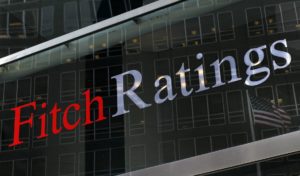
The international rating agency Fitch Ratings expects acceleration of growth of the Ukrainian economy from 3.2% in 2019 to 3.5% in 2020 and 3.8% in 2021 due to private consumption and investment. “According to official estimates, the economy grew by 3.2% in 2019 and Fitch expects growth of 3.5% in 2020 and 3.8% in 2021 supported by private consumption and investment. The revised version of the land market legislation will be positive for economic growth in the near term through increased consumption (as result of land sales) and expected increase in the demand for credit for the agricultural sector. Nevertheless, the scale of potential investment and productivity improvements will be constrained by limits on foreign investors’ participation,” the agency said on its website.
“Fitch considers that growth and investment prospects depend on the adequate and timely implementation of reforms to address constrains such as the rule of law, corruption, customs and taxation and law enforcement. As with other emerging markets, downside risks to the growth outlook have increase due to uncertainty of the impact of COVID-19 on global growth and commodity prices,” according to the report.
“Fitch considers that the NBU’s (the National Bank of Ukraine) easing cycle, lower portfolio inflows, a wider current account deficit and increased global uncertainty will lead to a weaker hryvnia in 2020 relative to 2019. External financing needs will remain high relative to peers (70% of international reserves) due to still large debt repayments and wider current account deficits. External sovereign amortizations (government plus NBU) will rise to $5 billion in 2020 and $4.8 billion in 2021 (external bond repayments averaging $2.4 billion). Fitch expects the current account deficit to widen to 3% and 4% of GDP in 2020 and 2021, respectively, from a low 0.7% in 2019, driven by continued import growth boosted by domestic demand and reduced gas transit fees,” the document states.
“As inflationary pressures remain subdued (3.2% in January), Fitch expects inflation to average 4.6% in 2020 and 5.3% in 2021,” Fitch experts said.
“Risks from international financial market volatility, delays in the IMF program approval or stronger-than-anticipated domestic demand pressures will determine the future pace and scale of the easing cycle. Fiscal risks for 2020 stem from weaker revenue growth due to a stronger than budgeted hryvnia and lower privatization revenues in addition to still to be defined social expenditure increases announced by the incoming authorities. Receipts from the Naftogaz arbitration award will help cushion government revenues and provide room to accommodate expenditure commitments under the 2020 budget, targeting a 2.1% of GDP deficit,” Fitch stated.
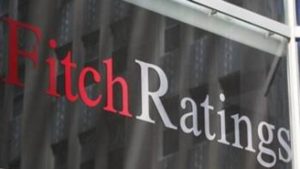
Fitch Ratings has assigned Kernel Holding S.A.’s new $300 million bond due in 2024 a final senior unsecured rating of ‘BB-‘ with a Recovery Rating of ‘RR4’ (50%).
Fitch said in a report on Thursday that the final rating is in line with the expected rating that Fitch assigned to this bond issue on 30 September 2019 and follows the pricing and receipt of the final documentation, which conform to the information already received.
Fitch said that the new $300 million bond’s ‘BB-‘/’RR4’ rating is aligned with the rating on the outstanding $500 million bond due 2022.
As reported, Kernel last week placed five-year $300 million bonds at 6.5% per annum. The pricing was set at 6.625%, the securities were sold at a price of 99.475% of the face value. The organizers of the placement were ING Bank, JP Morgan.
In January 2017, Kernel placed eurobonds worth $500 million. The maturity date of Kernel’s debut eurobonds was January 31, 2022, and the coupon rate was set at 8.75% per annum.
Kernel is the world’s largest producer and exporter of sunflower oil, the leading producer and supplier of agricultural products from the Black Sea region to world markets.

Fitch Ratings has upgraded Ukrainian integrated steel company Metinvest B.V.’s (Metinvest) Long-Term Local- and Foreign-Currency Issuer Default Ratings (IDRs) and senior unsecured bonds to ‘BB-‘ from ‘B+’. The Outlook is Stable.
“The upgrade follows Ukraine’s Country Ceiling upgrade to ‘B’ from ‘B-‘on 6 September 2019. The IDR of Metinvest remains two notches above the Country Ceiling,” Fitch said in a report.
Fitch said that this happened due to its comfortable hard-currency (HC) external debt service coverage, and also its ‘BB’ category business and financial profiles.
In addition, S&P Global Ratings raised Metinvest’s issuer credit rating and its issue ratings on the existing notes to ‘B’ from ‘B-‘. The Outlook is Stable.
S&P said that the Ukrainian steel maker Metinvest has built a track record of balanced financial policy in the past 18 months, with relatively low gearing and positive free cash flow, supporting an adequate spending between growth and shareholder returns.
The two agencies also assigned preliminary ratings to senior unsecured notes of at least $500 million proposed by Metinvest to issue at once after purchase for cash up to $440 million notes in circulation: Fitch – ‘BB-(EXP),’ and S&P – ‘B.’
“The proposed senior unsecured notes of at least $500 million will smooth the maturity profile and strengthen liquidity,” S&P said.
Fitch expects Metinvest’s HC external debt service cover ratio to be comfortable at above our 1.5x threshold on a 18-month rolling basis, allowing the company’s IDR to remain two notches above Ukraine’s ‘B’ Country Ceiling . The top line of the ratio is mainly comprises substantial export EBITDA, aided by abroad EBITDA and cash. The bottom line of the ratio represents HC debt service, comprising principal repayments and interest payments, which are fairly smooth over 2019-2022. The company faces a $945 million notes maturity in 2023 but this would be addressed by the upcoming notes issue, which will improve HC external debt service coverage for 2023.
Fitch said that since the last rating action in April 2019 we have revised Metinvest’s full-year EBITDA down to slightly above $1.5 billion in both 2019 and 2020 and slightly under $1.5 billion in 2021 and 2022, reflecting sharper-than-previously expected price contraction across the steel value chain.
Fitch said that Metinvest is an important eastern European producer of metal products (8.8 million tonnes in 2018) and iron ore (27.3 million tonnes of concentrate and pellets in 2018), with around 300% self-sufficiency in iron ore but only 40%-45% in coking coal.
“The steel segment’s proximity to Black Sea and Azov Sea ports allows the company to benefit from both cheaper steel exports and seaborne coal imports logistics. The operations are also further integrated into downstream operations in Italy, Bulgaria and the UK. Partial integration into key raw materials and exposure to high value-added products help Metinvest mitigate but not avert steel market volatility,” Fitch said.
Fitch said that the conflict in eastern Ukraine continues to pose risks to day-to-day operations. Metinvest’s exposure to the risks of conflict escalation remains high relative to its EMEA peers, although Fitch admitted that most of its 1H19 EBITDA is generated by its mining assets located substantially farther from the conflict zone.
S&P expects that the company will maintain an adjusted funds from operations (FFO) to debt of 35%-40% in 2019 and 2020, well in the range commensurate with the current ‘B’ rating (20%-40%), with a positive discretionary cash flow (free cash flow after capex and dividends).
“We believe that the current market conditions will have a mixed impact on the company’s results in 2019,” S&P said.
“We expect Metinvest to benefit from the abnormal iron ore and pellet prices. Under our calculations, the EBITDA would need to fall to about $1.1 billion in 2020, compared with $1.5 billion-$1.7 billion in our base case, before witnessing a pressure on the rating,” S&P said.
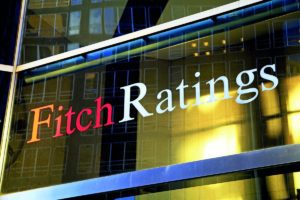
Fitch Ratings has upgraded Ukraine’s Long-Term Foreign- and Local-Currency Issuer Default Ratings (IDR) to ‘B’ from ‘B-‘, the outlooks are positive, according to a report on the rating agency’s website.
“Ukraine has demonstrated timely access to fiscal and external financing, improving macroeconomic stability and declining public indebtedness, while a shortened electoral period has reduced domestic political uncertainty. Expected macroeconomic policy continuity, the new government’s strong stated commitment to structural reforms and engagement with IFIs mean that Fitch expects further improvements in creditworthiness,” the report says.
“President Volodymyr Zelensky’s strong popular support and his party’s control of government and parliament provide the government with a uniquely strong position to move ahead with its reform-minded policy agenda. After a commanding victory in the second round of presidential elections, the president’s party Servant of the People (SOP) obtained control of the Verkhovna Rada (256 out of 450 seats) in snap parliamentary elections (originally scheduled for end October). The recently formed government under Prime Minister Oleksiy Honcharuk includes technocratic, pro-western and reform-minded ministers. Key economic policy makers such as Minister of Finance Oksana Markarova remain in their positions, supporting the continuity of policies underpinning reduced macroeconomic imbalances and improved stability,” Fitch said.
“The new prime minister intends to negotiate a new and longer program with the IMF, possibly an Extended Fund Facility (EFF), in the near term. The high likelihood of continued IMF engagement will facilitate access to official and market financing to meet large sovereign debt repayments in 2020-2021, and serve as an anchor for policies and reforms that could potentially lift growth prospects,” the agency experts stated.
“Prudent fiscal management, stable growth, declining interest rates and moderate exchange rate depreciation pressure will support continued government debt reduction. We expect government debt to decline to 47.9% of GDP (55.8% including guarantees) by end-2019, down almost 20 p.p. from the peak of 69.2% (80.9% including guarantees) in 2016 and below the current 57.5% ‘B’ median, and reach 44.4% by 2021. Government debt dynamics are highly exposed to currency risk as 67% is foreign currency denominated, but greater non-resident participation in the local bond market will help increase the share of local currency debt and extend maturities,” according to the document
“The long-awaited increase in Ukraine’s credit rating was made possible thanks to macroeconomic stabilization, a decrease in government debt and a reduction in political risks. This means that confidence in Ukraine is growing, and the risks associated with our creditworthiness are decreasing. And most importantly, the cost of borrowing will decrease,” Finance Minister of Ukraine Oksana Markarova said.
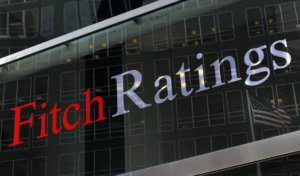
Fitch Ratings has affirmed the Ukrainian City of Kyiv’s Long-Term Foreign- and Local-Currency Issuer Default Ratings (IDRs) at ‘B-‘, Fitch Ratings said in a press release on September 21. Simultaneously Fitch has upgraded Kyiv’s National Long-Term Rating to ‘A(ukr)’ from ‘A-(ukr)’. The Outlooks are Stable.
Fitch said that the upgrade of the National Rating reflects the improvement in Kyiv’s credit strength following the exchange of $101.15 million of the non-restructured part of $250 million LPN due in 2015 for new LPN due in 2022.
Fitch has also assigned PBR Kyiv Finance PLC’s $115.072 million loan participation notes (LPN) due December 2022 a ‘B-‘ rating.
“The issuer is the city’s financial SPV, and the LPN were issued on a limited recourse basis for the sole purpose of financing a loan made to the city. Thus they represent direct, unconditional, unsecured and unsubordinated obligations of Kyiv and at all times rank pari passu with all its unsecured and unsubordinated obligations,” Fitch said.
As was reported, Kyiv’s 2015 eurobonds were included in the perimeter of the debt operation envisaged by the International Monetary Fund’s Extended Fund Facility (EFF). They included two issues of eurobonds: 10-year $250-million eurobonds maturing on November 6, 2015, with a coupon rate of 8% per annum and five-year $300-million eurobonds maturing on July 11, 2016, with a coupon rate of 9.375% per annum.
On November 23, 2015, Kyiv offered bondholders to exchange its eurobonds for sovereign eurobonds of Ukraine falling due in 2019-2020 and state derivative securities. In keeping with the offer, one bond with a nominal value of $1,000 was to be swapped for two sovereign eurobonds maturing in 2019 and 2020 whose face value is $375 each and a rate of 7.75% per annum and state derivatives with a conditional value of $250. Interest accrued on the bonds was to be capitalized and added to the principal amount of new bonds.
As part of a debt restructuring operation, the government of Ukraine on December 18, 2015, allowed the conversion of Kyiv’s debt on 2015 eurobonds worth $117.394 million and 2016 eurobonds worth $233.672 million into state debt.
The restructuring of the 2015 eurobonds was backed by 59.51% of their holders and that of 2016 eurobonds – by 90.9%. According to a source of Bloomberg, the 2015 eurobond offer was rejected by London-based Franklin Templeton Inv Mgmt Ltd., which held 32% of 2015 eurobonds. After that, according to available information, negotiations were held with that creditor.
Kyiv City Council on September 4, 2018 completed the restructuring of its outstanding foreign debt by exchanging eurobonds with a yield of 8% and maturing in 2015 with a total nominal value of $101.149 million for new loan participation notes (LPN) falling due on December 15, 2022, with a yield of 7.5%
© 2016-2024, Open4Business. All rights reserved.
All news and diagrams placed on this Web site is made for internal use. Its reproduction or distribution in any form are welcome in case of placing a direct hyperlink to a source. Reproduction or distribution of information which contains Interfax-Ukraine as a source is prohibited without the written permission from the Interfax-Ukraine news agency. Photoes placed on this site are taken from open sources only; rightholder are welcome to make demands to info@open4business.com.ua , in this case we are ready to put your copyright to a photo or replace it.